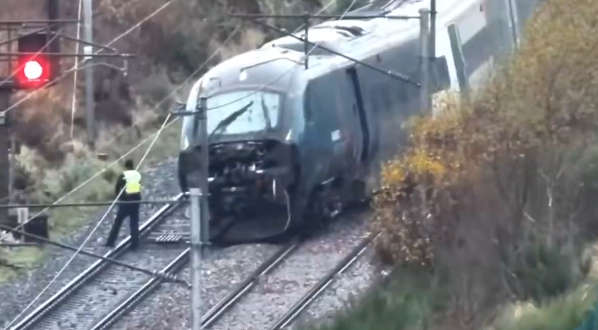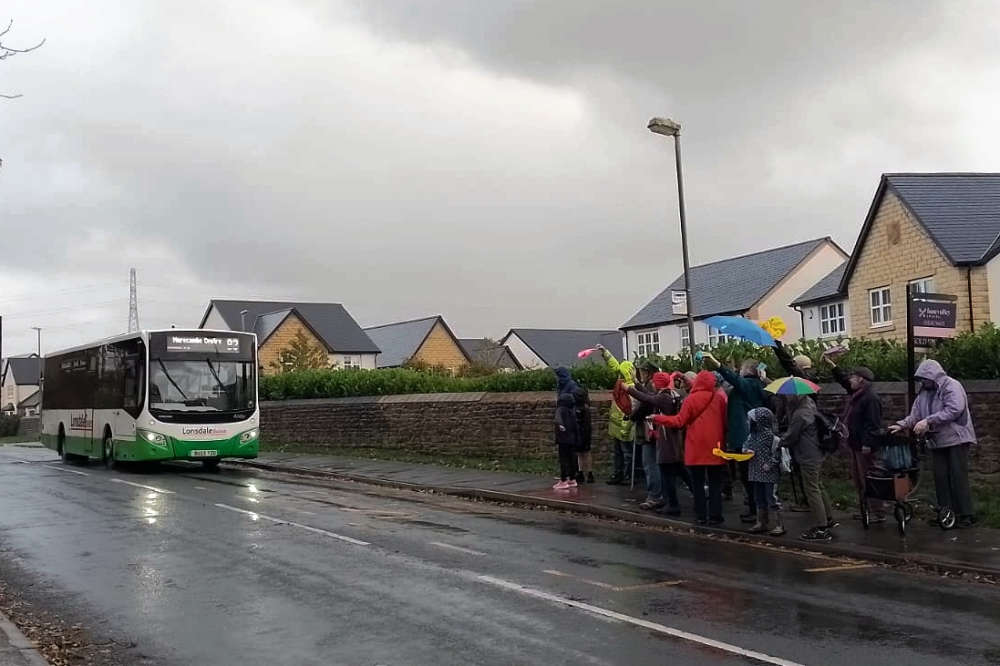
People are being urged to have their say on a new plan which aims to help Morecambe Bay’s most important habitats and species recover and thrive.
Birds, rare bees, moths and butterflies are all on the list of wildlife that could be lost without important measures to restore their natural homes.
Locally, these include Duke of Burgundy and high brown fritillary butterflies – declining across the UK and limited in Lancashire to the intricate limestone habitats at Gait Barrows National Nature Reserve in Silverdale; the Hen harrier, an iconic species found in the uplands of The Forest of Bowland - an important breeding stronghold for this species; the Belted Beauty moth – found in local saltmarshes, this colony is the last remaining in England and Wales; the Wall Mason bee – a nationally rare species which inhabits grassland and woodland edges and has a stronghold in Morecambe Bay; and Red squirrels – an iconic woodland species found in isolated areas of the county. Numbers are currently too low to support a healthy breeding population.
Lancashire's Local Nature Recovery Strategy (LNRS) aims to restore habitats, stop species loss, help local wildlife flourish, and make our environment more resilient, whilst bringing wider benefits to our residents and funding opportunities to our rural communities.
The strategy includes a new Local Habitat Map for Lancashire which identifies the key areas for nature across the county, looked at what’s putting them at risk, and where the best chances are to restore, enhance, connect and create new spaces for nature. It covers the wider Lancashire area including Blackpool and Blackburn with Darwen.
Its purpose is to assist land managers, developers, planners, environmental organisations, community groups and residents to pursue opportunities to help nature recover, and to target action and funding.
Launching today (Monday June 23), the statutory consultation asks respondents if they think the aims and priorities of the plan are clear, what they are seeking to achieve and how the LNRS can be used.
Almost 1,000 people and organisations helped shape the strategy by responding to a survey held in early 2024 with their priorities for nature recovery in Lancashire.
County Councillor Joshua Roberts, Lancashire County Council cabinet member for Rural Affairs, Environment and Communities, said: "We are encouraging everyone to have a look at the strategy and let us know what they think about the priorities and actions proposed for those species and habitats which they told us were most important to them.
"We have been working with land managers and farmers, wildlife charities and specialists to create a plan which will help connect, create, restore and enhance those habitats and the species they support.
"The strategy will help to direct future nature recovery funding across Lancashire, as well as help enable the development of farms and other rural businesses which may be looking to diversify and make space for nature."
Find out more about these plans and give your feedback before the consultation closes on Sunday August 3 at www.lancashire.gov.uk/lnrs


 Praise for Lancaster and Morecambe youngsters who took part in 'tongue movement' project
Praise for Lancaster and Morecambe youngsters who took part in 'tongue movement' project
 Clinic where students offer free legal advice to reopen at Lancaster University
Clinic where students offer free legal advice to reopen at Lancaster University
 Lines reopen after train derailment on Scotland-London line
Lines reopen after train derailment on Scotland-London line
 Police arrest two and seize illegal bike in Morecambe
Police arrest two and seize illegal bike in Morecambe
 ITV commissions sixth series of Morecambe crime drama The Bay
ITV commissions sixth series of Morecambe crime drama The Bay
 E-bike shop moves from Lancaster to new Carnforth showroom
E-bike shop moves from Lancaster to new Carnforth showroom
 Lancaster workshop to tackle the issue of drink and needle spiking
Lancaster workshop to tackle the issue of drink and needle spiking
 Morecambe raw feeds shop up for three 'Animal Star' awards
Morecambe raw feeds shop up for three 'Animal Star' awards
 Two new festivals proposed for Morecambe entertainment venue the Platform
Two new festivals proposed for Morecambe entertainment venue the Platform
 Second day of disruption as work continues after train derails in Cumbria
Second day of disruption as work continues after train derails in Cumbria
 Morecambe lifeboat crew’s swift response rescues swimmer ‘being swept dangerously out to sea’
Morecambe lifeboat crew’s swift response rescues swimmer ‘being swept dangerously out to sea’
 'Street Meets' announced to answer your questions amid new wheelie bin roll-out
'Street Meets' announced to answer your questions amid new wheelie bin roll-out
 Campaign group welcomes new "life changing" bus service to Morecambe
Campaign group welcomes new "life changing" bus service to Morecambe
 Lancaster prison worker jailed for drug offences
Lancaster prison worker jailed for drug offences
 Major disruption as train derails on West Coast Main Line
Major disruption as train derails on West Coast Main Line
 Talks begin for events to mark Eric Morecambe's 100th birthday
Talks begin for events to mark Eric Morecambe's 100th birthday
 Lancaster music venue due to shut will now stay open "well into 2026"
Lancaster music venue due to shut will now stay open "well into 2026"
 Halloween What's On Guide
Halloween What's On Guide
 LISTEN: Launch of new group in Morecambe to help with gambling addiction
LISTEN: Launch of new group in Morecambe to help with gambling addiction
 LISTEN: New centre for people with disabilities to open in historic Lancaster location
LISTEN: New centre for people with disabilities to open in historic Lancaster location







